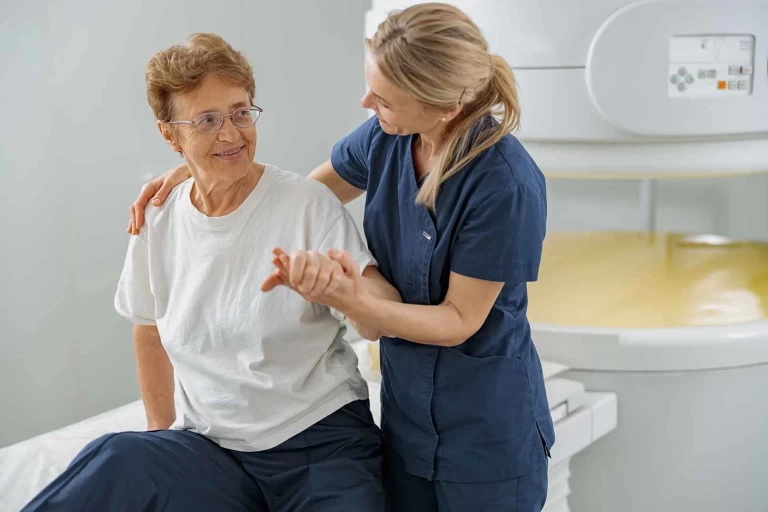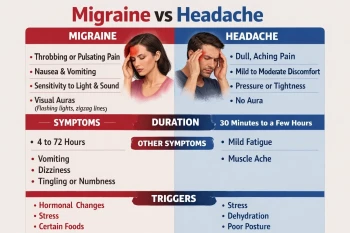
Post-concussion syndrome (PCS) is a complex condition that can persist after a mild traumatic brain injury (mTBI), with symptoms such as headaches, dizziness, brain fog, fatigue, and cognitive difficulties lingering for weeks, months, or even years.
While traditional medical approaches often focus on symptom management through medication or rest, upper cervical chiropractic care offers a targeted, non-invasive solution that addresses a potential root cause: misalignments in the upper cervical spine.
This article explores how upper cervical treatment can alleviate PCS symptoms, its mechanisms, and why it’s gaining attention as an effective therapy for those struggling with prolonged recovery.
The Link Between the Cervical Spine and Post-Concussion Syndrome
The upper cervical spine, comprising the atlas (C1) and axis (C2) vertebrae, is a critical area due to its proximity to the brainstem and its role in facilitating blood flow, cerebrospinal fluid (CSF) drainage, and nerve communication.
A concussion, often caused by a forceful impact or rapid head movement, can misalign these vertebrae, leading to complications that contribute to PCS symptoms. Research suggests that the force required to cause a concussion (approximately 95 G’s) far exceeds the 4-6 G’s needed to injure the neck, meaning nearly all concussions involve some degree of cervical spine trauma.
These misalignments, or subluxations, can disrupt several physiological processes:
1. Nervous System Function: Misalignments in the atlas or axis may compress the brainstem or spinal cord, impairing nerve signal transmission. This can lead to cognitive issues, mood disturbances, and sensory sensitivities common in PCS.
2. Blood Flow: The cervical spine supports vertebral arteries that supply blood to the brain. Misalignments can restrict this flow, contributing to headaches, dizziness, and brain fog.
3. Cerebrospinal Fluid Drainage: Misalignments may impede CSF flow, causing intracranial pressure that exacerbates symptoms like vertigo and cognitive dysfunction.
These disruptions often go undetected in standard imaging like X-rays or MRIs, which primarily rule out fractures or lesions but may miss subtle misalignments.
Symptoms such as headaches triggered by neck movement, neck pain, or persistent dizziness may indicate a cervical component to PCS, making upper cervical care a promising treatment avenue.
How Upper Cervical Chiropractic Care Works
Upper cervical chiropractic care is a specialized discipline that focuses on the precise alignment of the atlas and axis vertebrae. Unlike general chiropractic techniques that may involve forceful adjustments, upper cervical care emphasizes gentle, precise corrections tailored to the individual’s anatomy.
Here’s how it typically works:
- Assessment: Practitioners use advanced diagnostic tools, such as Cone Beam Computed Tomography (CBCT) or 3D imaging, to identify the exact angle and degree of misalignment. These tools provide detailed insights that traditional X-rays may miss.
- Gentle Adjustments: Using precise, low-force techniques, chiropractors correct misalignments without twisting or cracking the neck. This approach minimizes discomfort and ensures long-lasting corrections.
- Restoration of Function: By realigning the upper cervical spine, these adjustments aim to restore proper nerve function, blood flow, and CSF drainage, addressing the underlying causes of PCS symptoms rather than masking them.
Benefits of Upper Cervical Treatment for PCS
Upper cervical care offers several benefits for individuals with PCS, supported by clinical observations and patient outcomes:
- Symptom Relief: Studies and patient reports indicate that correcting upper cervical misalignments can reduce headaches, dizziness, and cognitive difficulties. For example, a case study of a former NFL player described significant relief from migraines, brain fog, and neck pain after upper cervical adjustments, likening the experience to “a toilet flushing” as pressure was relieved.
- Non-Invasive Approach: Unlike medications, which may stress the liver or fail to address root causes, upper cervical care is drug-free and focuses on enabling the body’s natural healing processes.
- Holistic Recovery: By improving nervous system function and blood flow, this treatment supports overall well-being, potentially alleviating secondary symptoms like fatigue, irritability, and sleep disturbances.
- Long-Lasting Results: As the body heals and stabilizes, adjustments often require less frequent visits, offering a sustainable solution compared to repeated symptomatic treatments.
What to Expect During Treatment
Patients seeking upper cervical care for PCS can expect a thorough and individualized process:
- Initial Consultation: A detailed history of the injury and symptoms is taken, often accompanied by neurological and musculoskeletal assessments.
- Diagnostic Imaging: Advanced imaging, such as CBCT or upright MRI, pinpoints misalignments with precision.
- Personalized Adjustments: Gentle corrections are applied, often requiring only a few sessions to achieve noticeable improvements. Patients may feel immediate relief or gradual progress over weeks as the body adapts.
- Complementary Care: Upper cervical care is most effective when paired with a multidisciplinary approach, including vestibular rehabilitation, vision therapy, or physical therapy to address related issues like eye misalignment or balance problems.
Finding a Path to Recovery
Living with post-concussion syndrome can feel overwhelming, but upper cervical chiropractic care offers a beacon of hope. By addressing misalignments in the upper cervical spine, this approach tackles the root causes of many PCS symptoms, promoting natural healing and restoring balance.
If you’re struggling with lingering symptoms, consider consulting an upper cervical chiropractor to discuss how this targeted therapy can support your journey to recovery.







Leave a comment